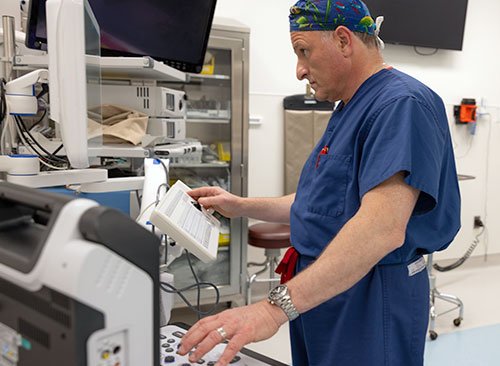Aquablation Surgery: A Revolution in BPH Treatment That Provides Long-Term Relief Without Endangering Sexual Health
Benign prostatic hyperplasia (BPH), the medical term for an enlarged prostate, is an undesirable rite of passage for millions of men over 50. If treatment is not received, it can progress into full-blown urinary dysfunction, infections, and even kidney or bladder damage. It begins subtly, with more midnight toilet visits.

Although BPH is not malignant in and of itself, its consequences can significantly interfere with day-to-day functioning. Medication, lifestyle modifications, and invasive surgery have been the available treatment options for decades. The field of urology is currently being reshaped by a new player: aquablation treatment, a surgery that is gaining popularity for all the right reasons.
Why is Aquablation a game-changer, and what is it?
Aquablation is a cutting-edge surgical technique that removes extra prostate tissue precisely using high-velocity jets of sterile saline—no blades, no burning, just water force and pinpoint accuracy.
In an operating room, the surgery is performed under general anesthesia. To ensure surgical accuracy, the surgeon watches a real-time ultrasound image of the prostate while controlling the water jets. In order to allow urethral inflammation to go down, patients usually utilize a catheter for around 24 hours after surgery.
What really makes aquablation unique, though, is that it maintains sexual function—particularly regular ejaculation—something that conventional operations sometimes jeopardize.
Long-Term Findings Indicate Effective Results
Aquablation was tested in two large clinical trials, WATER and WATER II, which monitored the results of more than 200 men with different prostate diameters.
This is what they discovered:
Prior to treatment: Severe symptoms were indicated by an average International Prostate Symptom Score (IPSS) of more than 22
After five years, the IPSS scores decreased to about 7, indicating a significant and long-lasting improvement in quality of life and urine function.
Hospital stay: Only 1.4 to 1.6 days on average.
After surgery, just 1% of patients still required BPH medications.
Re-treatment rate: Fewer than five percent of males needed another surgery.
Almost all individuals maintained their pre-surgery sexual health, demonstrating an impressive preservation of sexual activity.
In contrast, preliminary findings from a different research, WATER III, revealed that although enucleation, a laser-based prostate surgery, was equally effective in reducing symptoms, a staggering 98% of those patients had ejaculatory dysfunction, a side effect that was noticeably missing in the aquablation group.
The Warnings: Blood Thinners and Bleeding
Of course, there are drawbacks to every surgery. Bleeding is more frequent following aquablation than following conventional thermal procedures, according to urologist and Harvard Medical School professor Dr. Heidi Rayala. The reason for this is that aquablation uses water pressure to slice tissue cleanly rather than cauterizing it.
Blood in the urine for 4–6 weeks after surgery is therefore not uncommon. Additionally, men taking blood thinners need to be closely monitored because it may not always be safe to cease taking them for the purpose of recovering.
What Comes Next? Larger Trials, More Data, and Increasing Momentum
The findings are "encouraging," but care is advised, according to Dr.
Aquablation's long-term efficacy and safety need to be thoroughly confirmed by larger research and longer follow-ups.
However, if preliminary results are consistent, aquablation may soon emerge as the preferred method of treating BPH, providing long-lasting relief without compromising intimacy or quality of life.
The Bottom Line
Though widespread, benign prostatic hyperplasia need not take over your life. An extremely accurate, less invasive, and sexually preserving substitute for traditional surgical techniques is aquablation. Even if it is not flawless and will not work for everyone, it is a daring advancement in prostate care.
Ask your urologist if aquablation is a good option for you if you are navigating BPH and weighing your options. Your future self might appreciate it in the form of happier, healthier days and fewer trips to the bathroom.
What's Your Reaction?




















